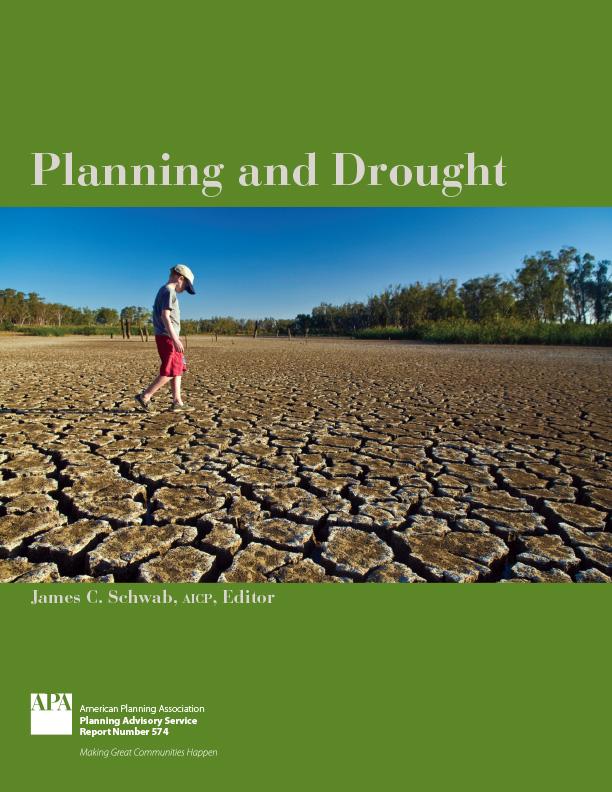Planning and Drought
The report begins by describing the impacts of drought on local and regional governments as a prelude to delineating what can be done—the nature of the opportunity for planners to make a meaningful difference. Those impacts extend well beyond a lack of water to the consequences of a lack of water: the decline of water quality; debilitation of public health in both mental and physical terms; damage to the natural environment; deterioration of public infrastructure and of some building foundations; economic losses; and a variety of potential secondary impacts from cascading hazards such as wildfires. Planners and their communities need to understand those potential impacts in order to identify the role of planning in addressing them.
Contents include:
Chapter 1: Drought: The Problem
- Water Impacts
- Public Health Impacts
- Environmental Impacts
- Built Environment Impacts
- Secondary Hazards
- Economic Impacts
- Drought as a Challenge for Planners
Chapter 2: Drought: The Knowledge Base
- Spatial and Seasonal Patterns of Drought
- Drought and Climate Changes
- Tracking Drought: Tools and Resources
- Using the Drought Resources Toolbox
Chapter 3: Drought: How Planners Can Address the Issue
- How Drought Differs from Other Hazards
- Land-Use Planning Activities Related to Drought Mitigation
- Types of Plans for Addressing Drought
- Addressing the Impacts of Climate Change
- Cross-Jurisdictional Partnerships for Drought and Water Planning
- Communicating Drought to the Community
Chapter 4: Drought Planning in Practice: Case Studies
- Civano
- Hualapai Tribe
- Athens–Clarke County, Georgia
- Albuquerque, New Mexico
- Tampa Bay Water
- Interstate Commission on the Potomac River Basin
- State of Colorado
- Murray–Darling Basin, Australia
Chapter 5: Framework for Drought: Conclusions
- Community and Regional Benefits of Drought Mitigation
- Looking to the Future: What Else Should Communities Do to Mitigate Drought?
Planning and Drought is the result of a partnership between the American Planning Association (APA), the National Drought Mitigation Center (NDMC) at the University of Nebraska-Lincoln, and the National Integrated Drought Information System (NIDIS). Funding was provided by NIDIS’s “Coping with Drought” initiative and the Sectoral Applications Research Program at the National Oceanic and Atmospheric Administration (NOAA), and the results of this work are dedicated to meeting public needs.
The report was developed under the auspices of the Hazards Planning Research Center, one of the APA’s National Centers for Planning. The center engages in research, policy, outreach, and education that advance hazard mitigation and disaster recovery through planning. For more information, visit www.planning.org/nationalcenters/hazards/(link is external). The APA’s National Centers for Planning conduct policy-relevant research and education involving community health, natural and man-made hazards, and green communities. For more details, visit www.planning.org/knowledgecenter/(link is external).


